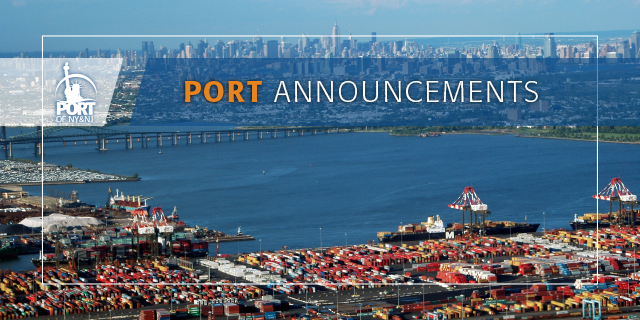The development of a Port Master Plan (PMP) for all facilities constituent to the Port of New York and New Jersey continues apace with a number of key achievements.
As reported in April 2017, the PMP will guide the growth and development of the Port of New York and New Jersey through a holistic and dynamic decision-making process aimed at continuing the enhance the port’s position as the premier North American East Coast gateway for commerce over the next 30 years.
To do this, the PMP will establish an informed and comprehensive road map designed to increase operational efficiency; optimize land utilization, business planning, capital requirements, and customer relation strategies; reduce environmental impacts; and enhance revenue opportunities.
Special attention will be paid to engage the port’s various stakeholders, as well as to capitalize on earlier investments made by The Port Authority of New York and New Jersey and its port tenants.
Stakeholders for the PMP include representatives throughout the entire supply chain from the maritime, transportation, logistics, and distribution industries, as well as planning organizations, regulatory, agencies, labor groups, host communities, and elected officials. Transparency, inclusivity, and feedback from each of these entities is considered essential in order for the PMP leadership team to gather information and direct decision-making from a well-informed position moving forward.
Since April, the PMP leadership team has collaborated actively with the Port, Planning, Government & Community Relations (GOCOR), plus various other departments and senior leadership of the Port Authority, as well as the PMP development team from Hatch.
To date, the team has carried out the following key activities:
- Development of a Comprehensive Stakeholder Engagement Program, including outreach to regulatory, funding, and planning agencies; community associations and economic development groups; elected officials; port tenants; and railroads.
- Development of an Assessment of Port Department facilities, which embraces current land use, financial performance, and understanding of historic, environmental, and community considerations – such as sea level rise and wetlands, air quality and emissions, endangered species, and historic resources. This Facilities Assessment also examines existing road and rail infrastructure; planned infrastructure improvements; and existing state, municipal, and other agency master plans.
- Development of a Market Analysis and Future State Vision report, which forecasts future market potential based on global trade projections and dynamics, plus expected population growth, and looks at the impacts potentially imposed by technology changes and future industry trends.
- Development of a Capacity Assessment that examines the capacity of existing facilities to accommodate the volume projections and market growth, including constraints in the regional road and rail networks.
Over the next quarter, the consulting team will develop a long list of potential planning and land-use options based on the analysis and outreach carried out to date, and will start to identify a shortlist of potential master plan solutions.
Worthy of noting: the Stakeholder Engagement Program is ongoing throughout the development of the Master Plan, and various stakeholder groups will be consulted over the coming months.
TO LEARN MORE ABOUT THE PORT OF NEW YORK AND NEW JERSEY
Subscribe to the Breaking Waves newsletter at: wwww.breakingwaves3.wpengine.com.
Follow @PortNYNJ on Twitter and Instagram, or look for the hashtag #deliveringthegoods over various social media.
Contact the Port Authority’s Port Department at: [email protected].

